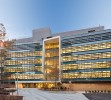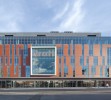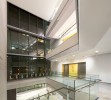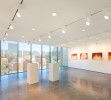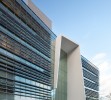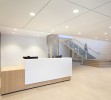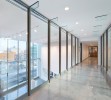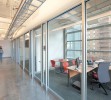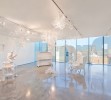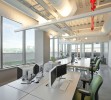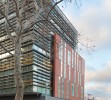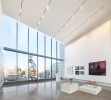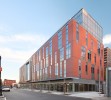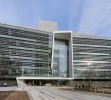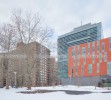Mending Myrtle Avenue: Pratt Institute's New Academic Building
Video
Myrtle Hall by WASA/Studio A
Most town and gown relationships are tenuous, if not tense, but Pratt Institute in Brooklyn, New York, has made a welcoming gesture toward neighboring Clinton Hill in the form of a new academic building that reknits the urban fabric. The new six-story, 120,000 sq. ft. (approximately 11,148 m2) Myrtle Hall is expected to achieve LEED Gold certification, and it will house the Institute's Department of Digital Arts, including studios, galleries, classrooms, labs, and administrative space.
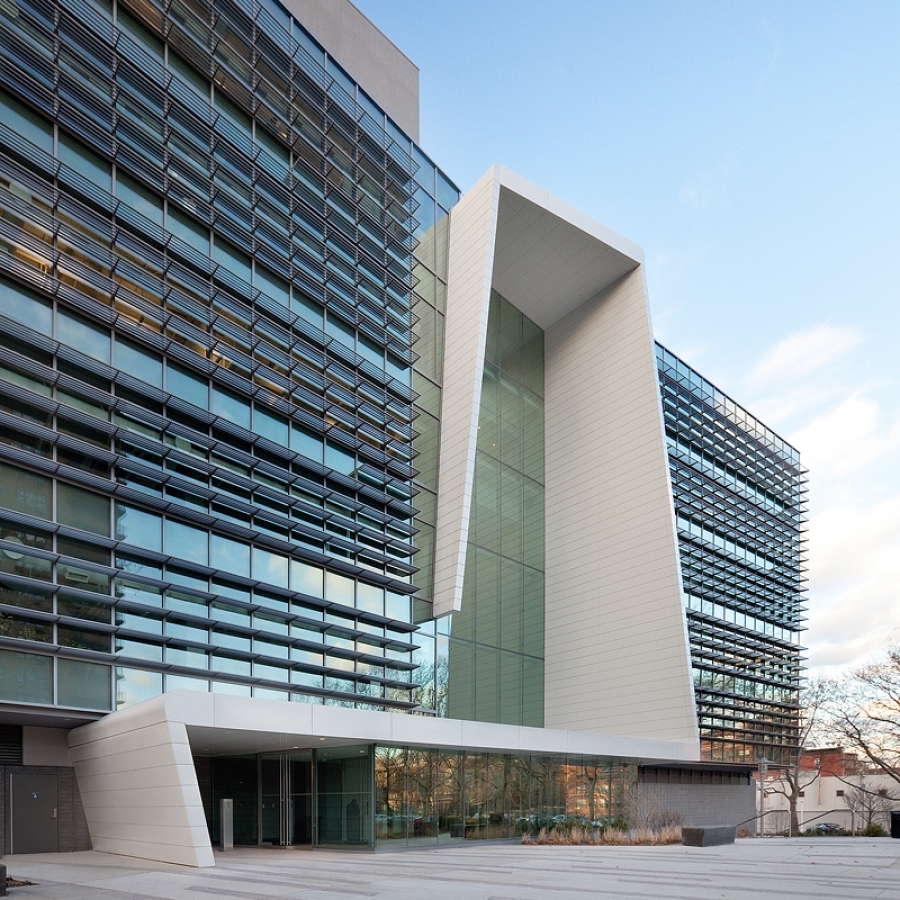 Photography by Alexander Severin/RAZUMMEDIA
Photography by Alexander Severin/RAZUMMEDIA
The 230' (70.1 m) long, bar-shaped building is an anomaly in that it is located outside the Pratt Institute's walls. The north side faces Myrtle Avenue, which was once a vital commercial corridor but declined in the 1970s following the closing of the nearby Brooklyn Navy Yard. Crime proliferated and it became known as "Murder Avenue." Low-scale developments replaced the stately structures that had lined the thoroughfare, further widening the gap between college and community. A neighborhood revitalization project enacted small improvements along Myrtle Avenue, but Myrtle Hall establishes a literal connection that will help to enliven the street front. The Pratt Institute chose to lease approximately 80% of its ground floor as retail space, and one unit has already been rented by a health food store.
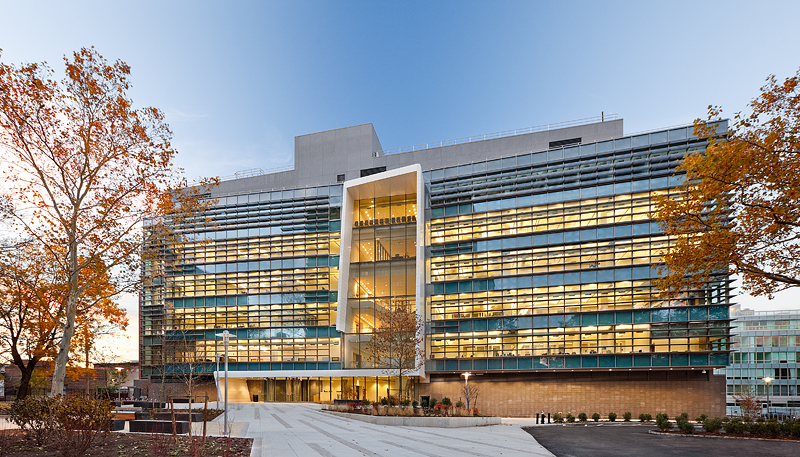
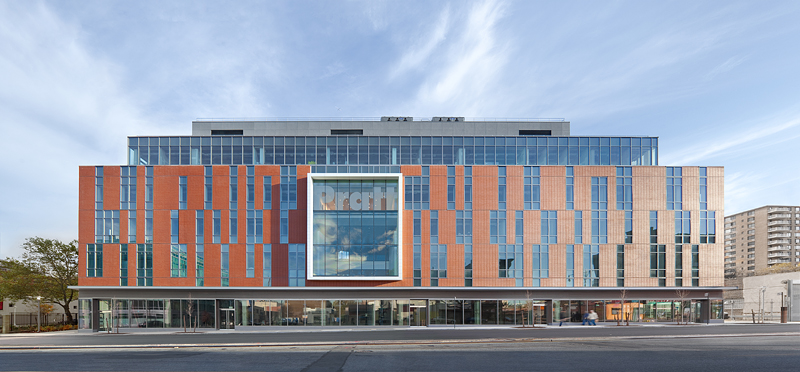
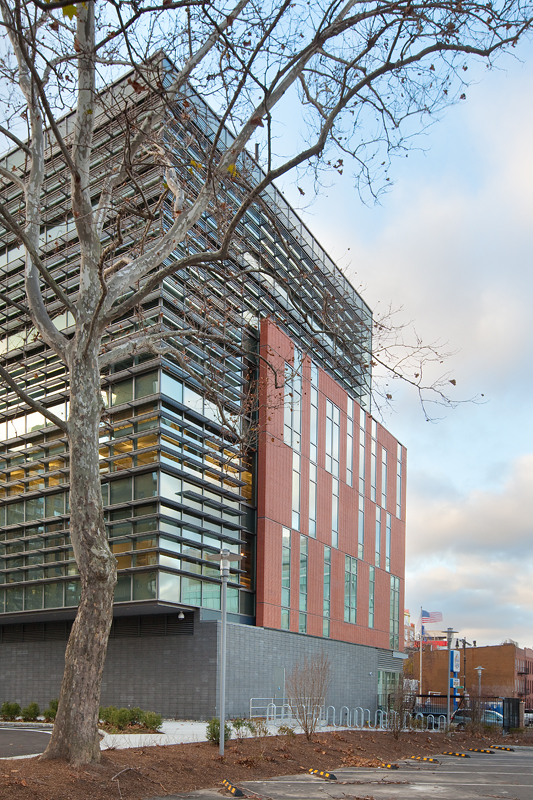
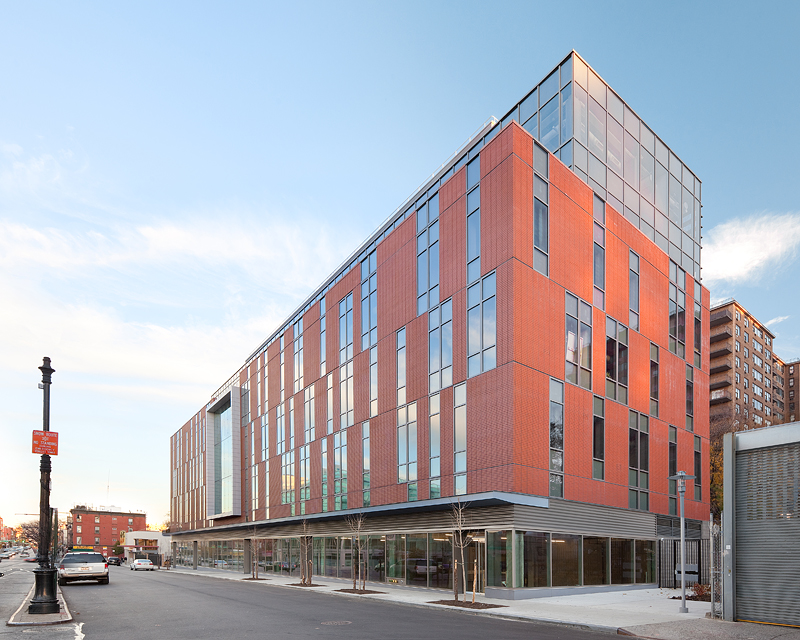
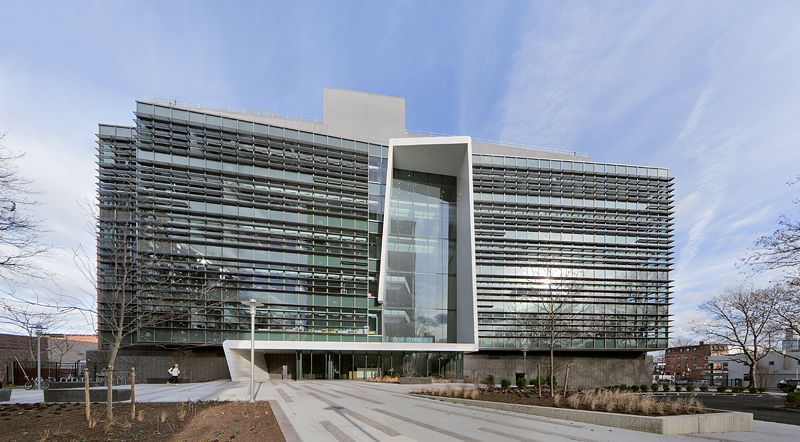
Jack Esterson, AIA, Partner in Charge and Lead Designer of the Myrtle Hall project, is a graduate of the Pratt Institute's School of Architecture, served an adjunct instructor for Pratt, and has been a Clinton Hill resident for 40 years. The design process, no doubt, has been a personal one. Esterson determined that "the two facades of the building should provide two very different responses."
The resulting concept is a collision of two halves, one solid and the other void – a yin and yang. The north side of the building, which faces Myrtle Avenue, is a four-story brick mass. It intersects a six-story glass volume on the south side, facing Pratt's campus. A multi-story glass atrium joins the volumes and punctures both the north and south facades.
"There is nothing subtle about it – it goes beyond style, addressing the larger issues of urban context and scale." Jack Esterson, AIA, Partner in Charge and Lead Designer
Each side of the bar is articulated according to its context. The brick facade along Myrtle Avenue addresses the scale, proportion, and materiality of the 19th century masonry structures of Clinton Hill. Esterson designed a panelized masonry system that alternates with windows. The pattern was then visually remixed via computer, resulting in a pixelated effect befitting a digital arts department. Unfortunately, the legibility of the parti – two opposing, intersecting volumes – is undermined at the ends of the building. The edge of the brick is revealed, and it appears as a thin wrapper rather than a substantial mass.
The six-story south facade, opening toward the Pratt campus, is more elegantly articulated. A glass curtain wall is layered with louvers, creating surface depth while mitigating sunlight (other sustainable features include a green roof and photovoltaic panels). However, the focal point and linchpin of the project is the central gallery, a light-filled atrium that is framed on both facades. On the south facade, Esterson wrapped the frame down to form the entry canopy, an enticing move that proves practical. Also eye-catching is the student and alumni work that is displayed within the space, and the 10' (3.0 m) tall logo for the Pratt Institute etched into the glass overlooking Myrtle Avenue. "There is nothing subtle about it – it goes beyond style, addressing the larger issues of urban context and scale," explains Esterson of the atrium design.
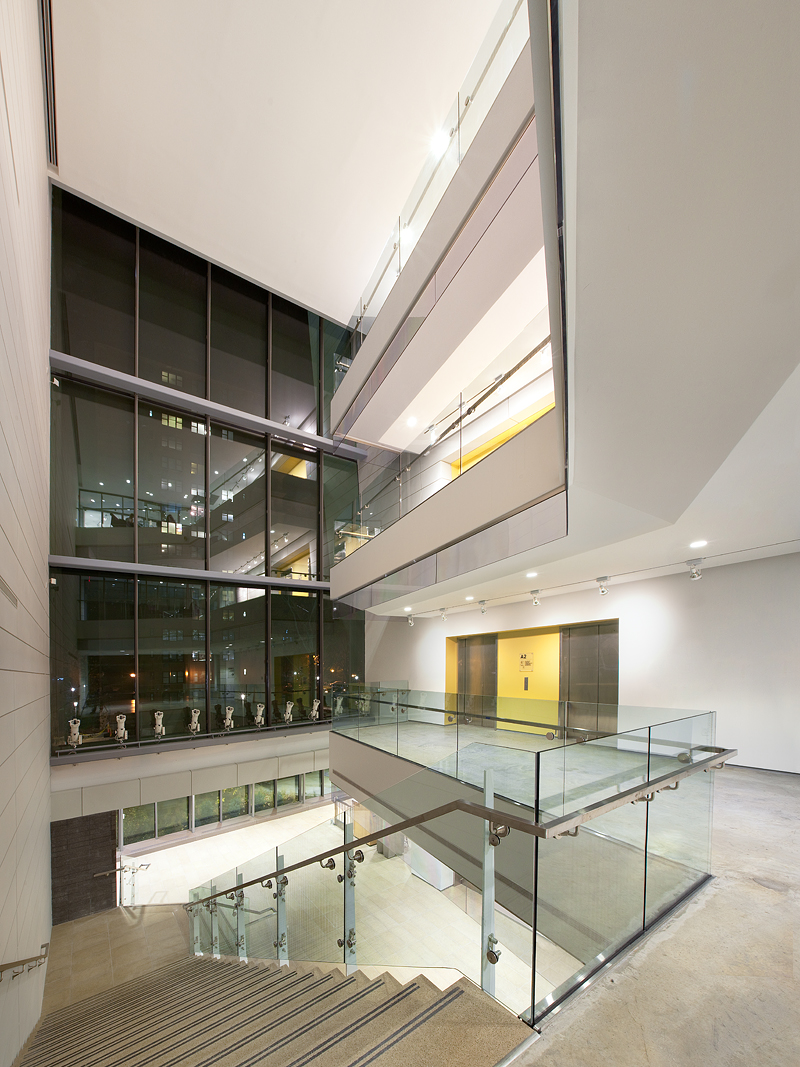
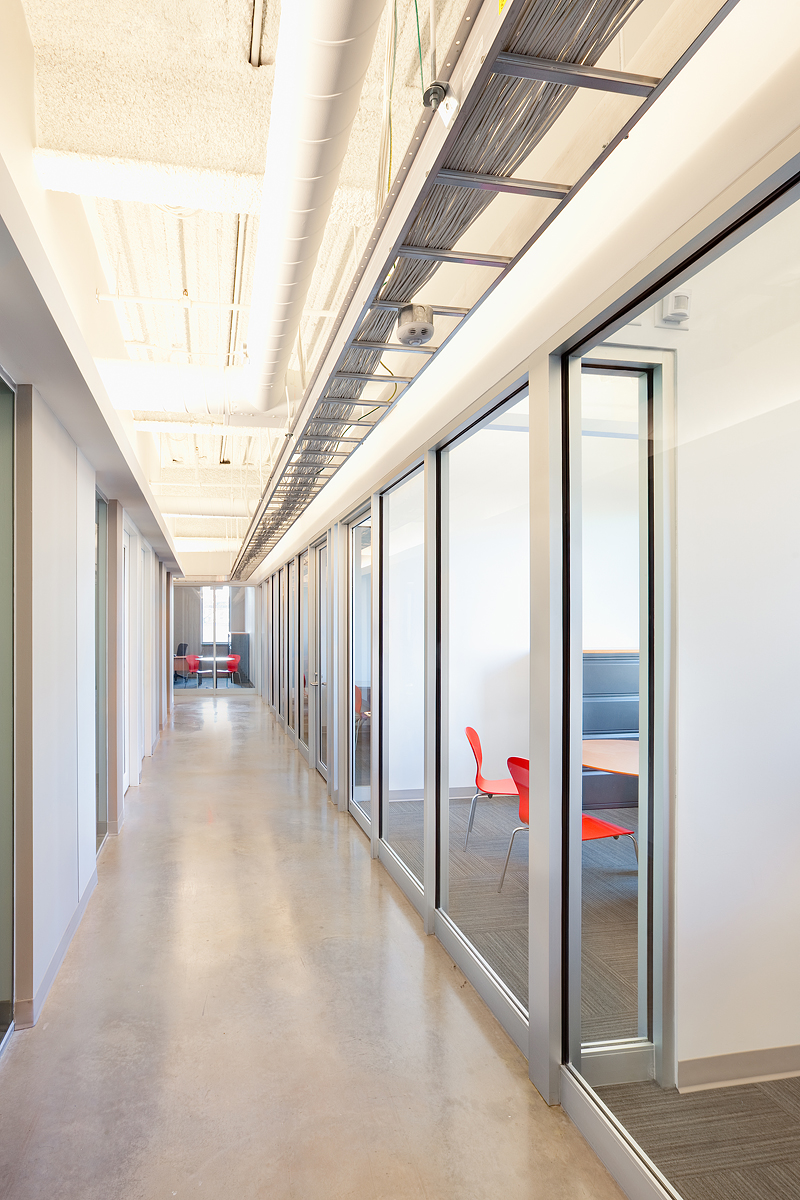
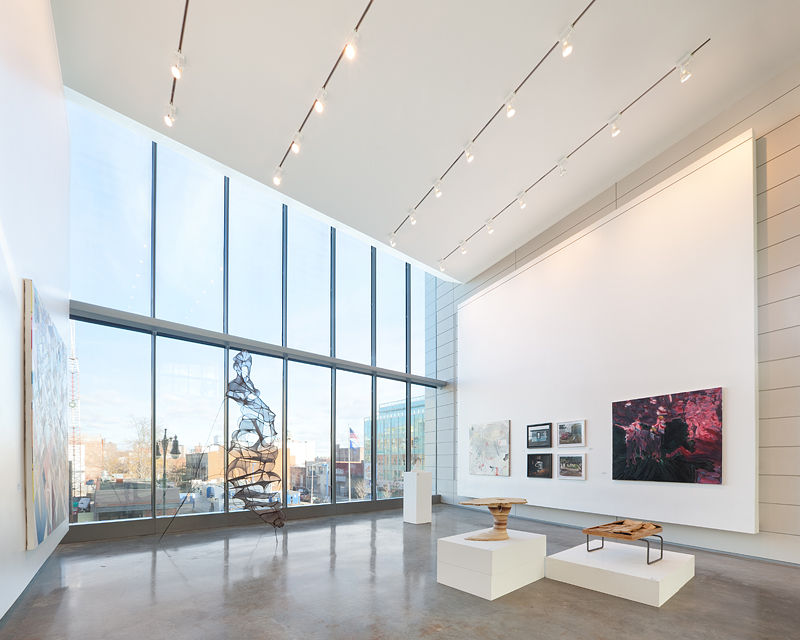
The building's exterior makes a bold statement, but the interiors are decidedly more subdued. Although Esterson typically prefers to design with a vibrant color palette, he adapted his style to the Pratt Institute's industrial aesthetic. Ultimately, he selected three shades of white and eight shades of gray to emphasize architectural elements, spatial sequencing, and the play of light. The building's loft-like interiors feature neutral yet resilient materials: exposed ductwork, polished concrete floors, and aluminum and glass storefront windows. "I hope the building gets dirty over the years; I like to think of it as being a neutral vessel," says Esterson.
So far, Pratt faculty and students as well as the Clinton Hill community have embraced the newly opened Myrtle Hall. Not only has it allowed the Pratt Institute to mend ties along Myrtle Avenue, Myrtle Hall also reinforces the Pratt's brand and illustrates its awareness of the world beyond its own walls.
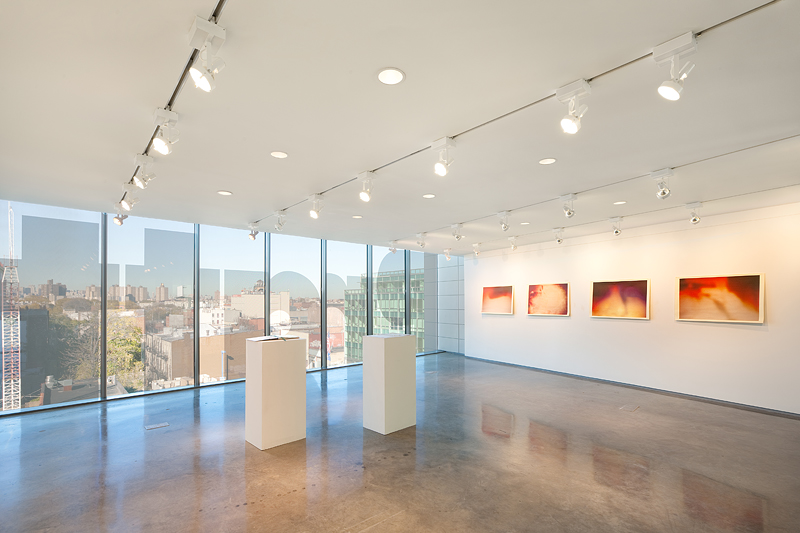
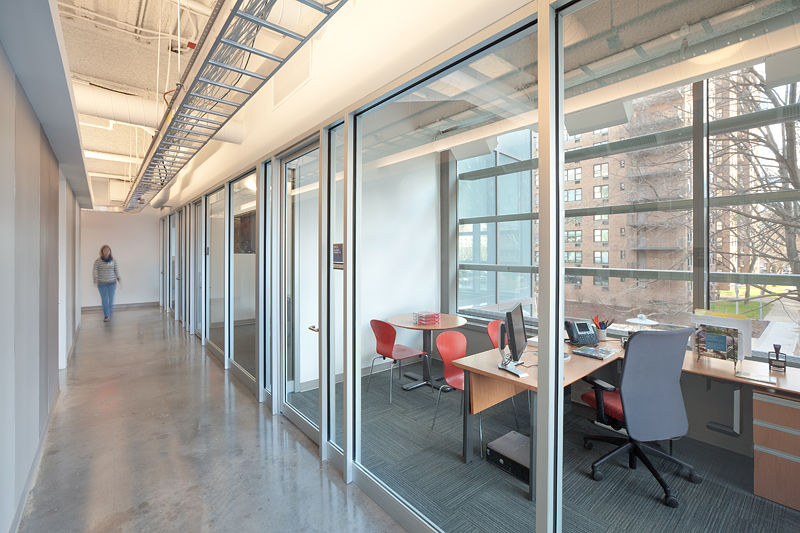
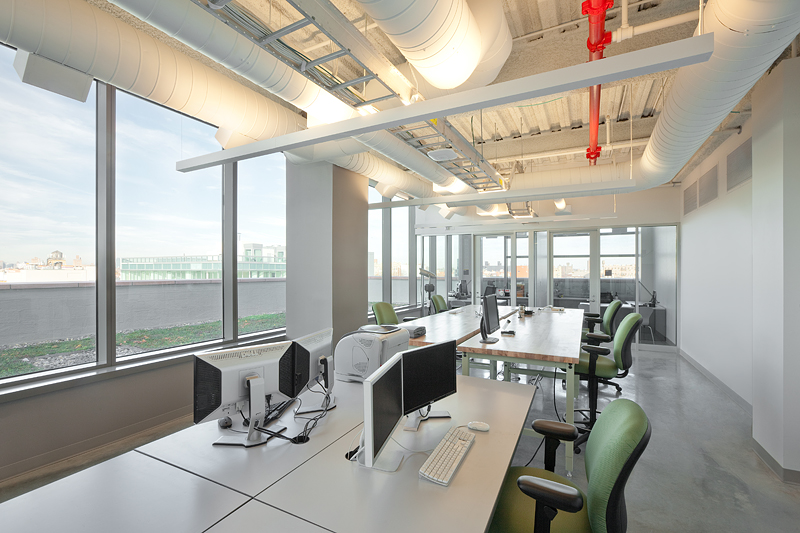
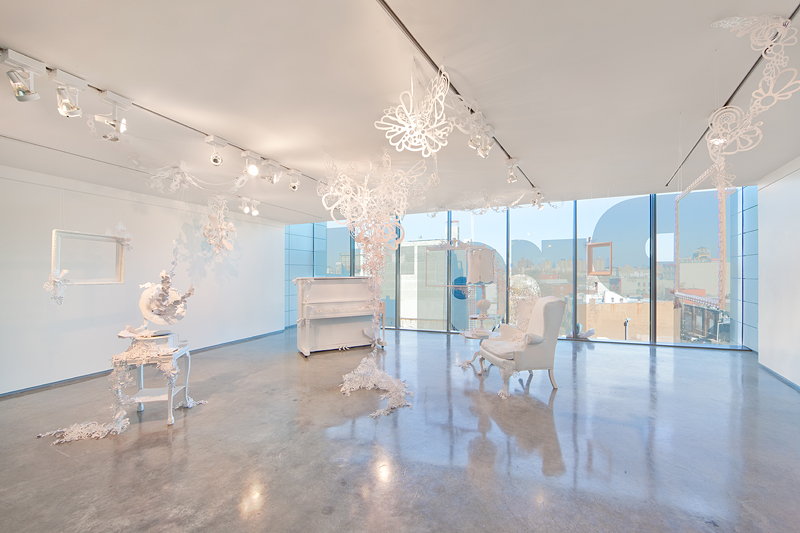

Murrye Bernard
Murrye is a freelance writer based in New York City. She holds a Bachelor's degree in Architecture from the University of Arkansas and is a LEED-accredited professional. Her work has been published in Architectural Record, Eco-Structure, and Architectural Lighting, among others. She also serves as a contributing editor for the American Institute of Architects' New York Chapter publication, eOculus.
Website: www.murrye.com
